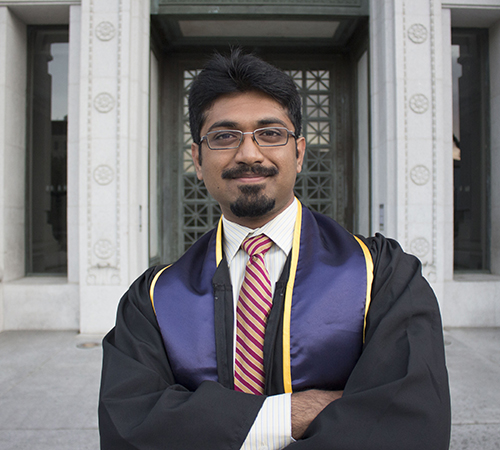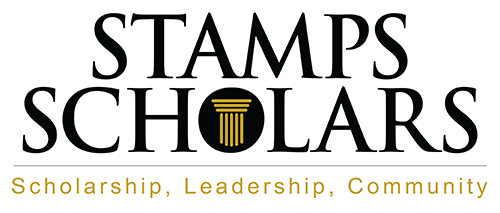 Where Engineering Meets Life Science
Where Engineering Meets Life Science
University of California, Berkeley Stamps alum Vidush Mukund plans to pursue a career in the fields where engineering meets the life sciences, such as brain-machine interfaces (BMI), biomimetic robotics, and biosensor systems.
Mukund grew up in the Evergreen area of San Jose, California, and attended Silver Creek High School, where he served as the president of the Junior State of America chapter, a speech, debate, and student government organization. He was also the vice president of the Japan Club and captained the team that secured first place at the National Japan Bowl, a Jeopardy-style competition about Japanese culture, history, and language.
His passion, though, lies at the intersection of neuroscience and engineering. As he put it, “the sweet mysteries of the genesis of consciousness and the mind-body problem are what attracted me to the field of neuroscience in the first place, and it was my love for logic and solving puzzles that got me hooked on electrical engineering and computer science.”
During his second year at Berkeley, he worked as a researcher with the Maharbiz Group under the supervision of Professor Maysam Chamanzar. The Maharbiz Group is focused on building advanced brain machine interfaces. Mukund worked on the development of the next generation of high-density neural probes. As part of his independent research project, Mukund investigated novel methods for the early detection of failure modalities in the probes. This research work was published and presented at the 2015 IEEE Engineering in Medicine and Biology Society conference in Milan, Italy.
He used his enrichment fund to travel to Gallipoli, Italy to attend the 2015 International Workshop on Advances in Sensors and Interfaces hosted by the Institute of Electric and Electronic Engineers. The fund allowed him “to meet and to network with many of the researchers working at the forefront of body area networks and neural interfaces.”
Mukund next worked in The NeuroBat Lab, applying machine learning and signal processing tools to assist in solving some of the lab’s projects. The NeuroBat Lab is a research group focused on investigating the neural basis of complex spatial and acoustic behaviors in bats to develop an understanding of the neural circuitry that supports vocal learning. He worked on several projects, including developing a user interface to synchronize video, audio, and neural data to ascertain the correlation between neural patterns and behavior. One independent research project he tackled was aimed at developing models for the classification of bat vocalizations from different colonies, using various machine learning techniques. The goal of this research was to ascertain if bats from different colonies learned different vocalization “dialects.”
He was also involved in Tau Beta Pi, the engineering honors society, and Etta Kappa Nu, the electrical engineering honors society, for which he served on the activities committee. Outside of school, he volunteered at events in and around Berkeley, working for organizations like Habitat for Humanity and The Berkeley Project. Some projects that he worked on involved the restoration of enclosures at the Oakland Zoo and the maintenance of a neighborhood dog park.
In his free time, he reads mystery and science fiction books. He is also an avid fan of murder mystery shows. While in the Boy Scouts, he developed a love for the outdoors, including backpacking, hiking, kayaking, and camping with friends.
This fall, he starts graduate school at Stanford University, pursuing a Master of Science in Electrical Engineering. He believes that the graduate degree and research at Stanford University will be a significant stepping stone in his pursuit of a career in the domain where engineering meets the life sciences.
“The Stamps Scholarship has allowed me to travel and network with other likeminded people in the field of brain machine interfaces,” said Mukund. “It also provided funds that made it possible for me to contribute to fundamental research while a student at UC Berkeley.”
